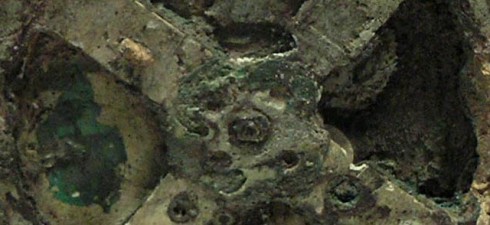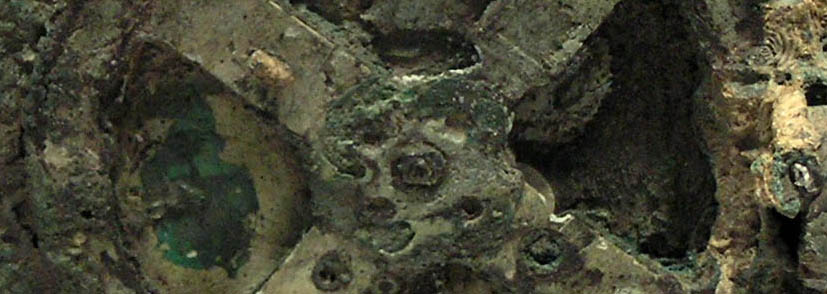Birthdays are a natural time to put one’s current moment into the perspective of history. This past week I’m realizing just how much history has slipped by in so little time. I guess all I can really ask is to live an eventful life, so I’m grateful. Just a single yet potent example of this is the world of electronic devices. How this world has changed in my forty-four years!
Some of you may know that I work at Microsoft. I was raised in Utah — WordPerfect and Novell country — so one might think I’d be something of a traitor, but I’ve never really been on that tribal bandwagon. For me it has always been more of a technology and thought-tribe thing than a corporate tribe thing. I feel connected to the ideas and the people who turn ideas into life-impacting reality and not to the companies that finance them. Yet these past six years at Microsoft have left me with a growing attachment to the company akin to that of my natural family. It certainly helped my sense of loyalties that I’ve been working on software for Apple computers. Yes, Microsoft makes software for all sorts of devices … ’cause some of you are always surprised to hear this, almost to the point of disbelief. These two companies, Apple and Microsoft, are more closely wedded in purpose and method than most are aware. But this is all just meandering thoughts and not where I’d planned to go today.
The decade of my birth saw many technological advances, not the least of which was the transition from metallic fonts set of molten metal in a fiery font foundry to photographic and electronic imaging of industrial typography. This is a conceptual and technological jump with many complex pieces and a long history of development, but it arrived as a practicality in the first years of my life. In the early nineteen-seventies I sat on my great-grandmother’s lap and counted cars as they drove by, while images of Apollo moon missions streamed effortlessly from a black and white television. This woman who attended me had walked across the American plains as a child, party to a pioneer wagon company. In 1983 I was writing my school papers on an IBM Selectric typewriter with a bottle of white-out at my side, and by 1993 I owned my own personal computer, a Gateway 2000 DX with 8 megabytes of Random Access Memory and a 250 megabyte hard-drive — smoking hot at the time, and was authoring text with all the miracles of electronic software. That same year I purchased a copy of the book, The Whole Internet, which promised to be a guide to connecting to a bunch of other computers and catalog of everything to be found on the network … and it was exactly that. The year 1993 was much more eventful than all of this; it was my first full year with Laurie, my wife. Hello, darling. I love you.
Now most of you have been around long enough to know just how things have changed since 1993 so I’ll save some time and skip right to the point: holy hell, have things changed or what?
This week I picked-up my first so-called “smart phone,” a Samsung Focus running Microsoft’s new mobile operating system, Windows Phone 7. This device has vastly more computing power than the systems onboard the command module for those Apollo missions back in my beginning. It can contain more textual, audio and photographic material than I can fit into every bookcase in my house and yet this is only the most minuscule part of what it can access and present to me as I sit on my throne — all the libraries and museums of the world, and more. This device allows me to communicate in real-time with hundreds of people and do so in many ways and contexts. It is a truly beautiful and awe-inspiring piece of technology which appears to spring from a computerized virtual shopping experience on an internet that has become incomprehensibly large, then land effortlessly via FedEx over-night air service in the palm of my hand.
This small device represents all of this in a way that tempts us to think of it as simple and obvious. Yet, on my 44th Birthday, I’m getting the feeling that my life has witnessed things truly miraculous. I wish I could share this moment with my great-grandmother. I imagine that she’d say: “Yes, of course. It only appears to be a miracle because you cannot see all the ages of human progress contained within it. Open your eyes, boy.”
— —
NOTES:
- The Image – The Antikythera Mechanism is a device designed to calculate astronomical positions. Found in an ancient Greek sea wreck, it is a surprisingly sophisticated device believed to have been built around 150–100 BCE. This image cropped from the full image available at NASA.gov.
- Resources – Special thanks to my parents, my grand-parents, and to all those who came before. You have wrought miracles.
- About – Cipher on a Wall is a weekly column and forum here on Doves & Serpents which explores the realm of mind, memories, and dreams. You can find an introductory post for Cipher on a Wall here and a full archive of posts here. My name is Matt, and I’ll be your host for the duration.


I tried to explain the purpose for tweeting to a good friend the other day. How powerful our technology has become and how it is affecting our communication. It could literally be replacing newspapers, television, and education as we know it. It is definitely changing my life, as I become good friends again on facebook with people I have not seen in 30 years, including but not limited to a penpal I had in 8th grade, from Poland. I can text – how r u . . . with the best of them but the junior high students are developing a text language of their own that is not taught in schools. Wonder what English will look like in a decade. LOL
My ancestors were farmers/laborers who the plains with the others in search of a place where they could have more than one wife – out of the notice of the people who tried to kill them previously. Three generations ago my people thought they had it made if a couple of children survived childhood. They clung to God in an admirable way – since they literally had nothing else. I think they wanted what everyone wants for their own children – a better and happier life. Given the caste systems of the time – sometimes it is better to try something totally new to shake it up a bit. I may not agree with the repression or oppression of the current system that developed but there is something valuable to learn from 48 women who would marry the same man and create a huge generation of children. Not the norm.
I’m a school teacher and everyone keeps telling me my profession stinks and education sucks in America. Oh really? Where have the greatest innovations of this century come from? We must have inadvertantly done something correct because we are living longer, have more choices, and invent more inventions than any other previous generation or country. The American experiment and pioneer spirit have combined here to produce some things that have changed and will continue to change the entire world. Some like to always be down and out but I say your new phone . . . proves the opposite to me.
I’m with you, Angie–I hate it when people bellyache about how terrible our school system is. Please.
Hello, Angie. Great insights! I agree. I think the main thing that has changed WRT (there’s some of that new English, :D) American innovation is that it’s become more of an internationally cooperative phenomenon rather than strictly insular and home-grown. Sometimes this feels like we’re losing our identity as Americans, but it’s just changing. Our ancestors were plains folk and pioneers with room to pursue off-the-wall lifestyles. We are increasingly metropolitan folk and networkers with our frontier in the clouds — so to speak.
Change is wild and dramatic these days and it’s tempting to feel like this equals bad. No doubt some is. But with it comes opportunity to change some more. I’m enjoying the ride.
Happy birthday! (belated, sorry) I actually get a little freaked out at how far we’ve come whenever I play around with my husband’s “work” iPad. Years ago we were wondering how long it would be before we were walking around with the hand held computers like on Star Trek:TNG, and now I’m just waiting for the giant computer desk/screen combos.)
Even the jump from my old iPhone to his new 4G one is amazing. He’s a developer that does mostly Apple related software and apps, but I think I’m actually the Mac snob. Whenever he says something like “the droid phone can actually do a lot more than the iPhone” I consider it blasphemy.
Thank you, Corktree! Facebook is where all the birthday action was. I just mentioned it in passing here because it was core to my context. Aren’t birthdays awesome for making you re-evaluate a perspective rut?
You’re right about the iPhone. It does less, more elegantly and this is by design and the source of its success. Android (and now, finally, Windows Phone) have a different approach and a different market appeal. I’m not at all surprised that you and your husband differ. There’s this really great comic that explains it all:
iPhone vs Android vs Blackberry